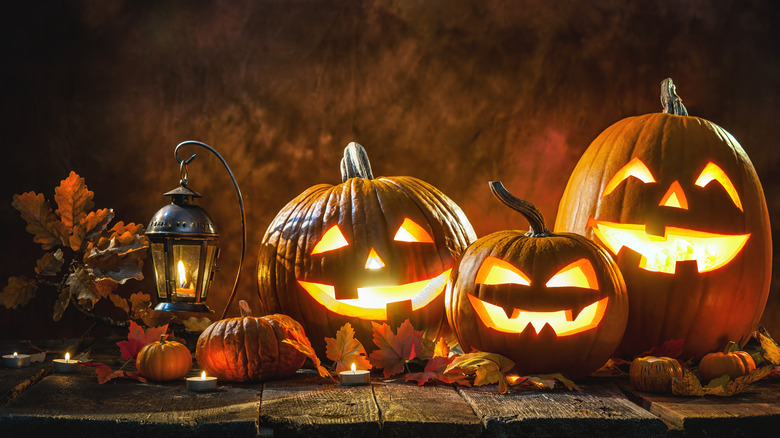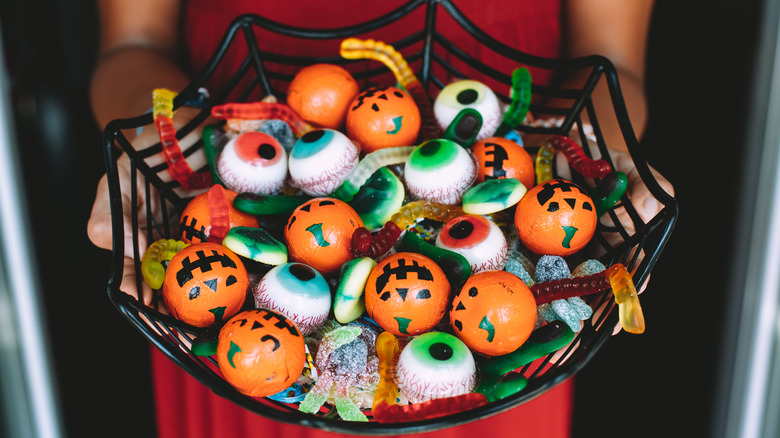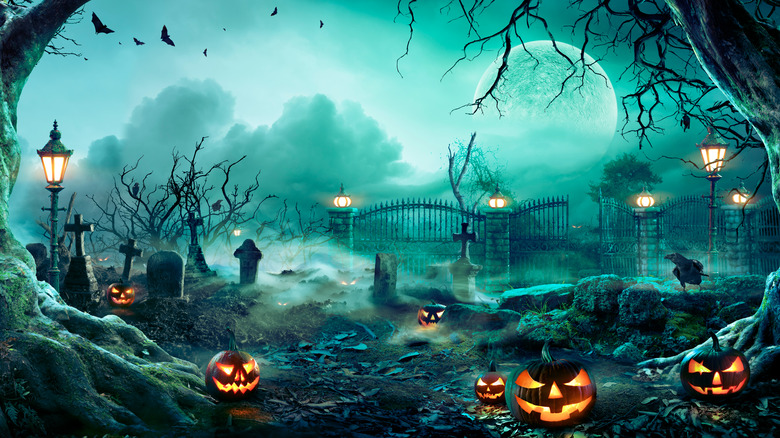Myths About Halloween That Have Already Been Busted
Halloween is a time for scaring friends, spooky costumes (or sexy ones, depending on where you're going), and plenty of pumpkin-spiced products. Add into the mix a bunch of strange and fantastical myths, and it's easy to see why misinformation spreads like wildfire.
The origins of Halloween as a holiday are a bit murky. It is thought to have become popular in the U.S. in 1840 (via Reuters), though its rich and varied history began long before its appearance in America. The first official celebration took place in Anoka, Minnesota over 100 years ago in 1921, but Halloween traditions date all the way back to before the 1st century AD. All the other things that are associated with Halloween like pumpkins and elaborate Halloween costumes came later to turn Halloween into the fun celebration most people view it as today.
It's not hard to get caught up in tales of tampering, woe, and misfortune, especially when there are plenty of tricksters about. With this in mind, which myths make the rounds year after year, and why should you pay no attention to them?
One of the most popular myths causes parents to be concerned each year
Several myths that are entirely false have gained credence in the past few years. According to the lifestyle magazine CafeMom, one of the most influential myths is the fear of candy being tampered with. Parents have understandably been worried about the sweets their children receive when trick or treating, even within the neighborhood. Reports of candy containing razor blades have caused a stir amongst parent communities, but is there any truth to it? Thankfully, not much.
As reported by USA Today, professor of sociology and criminal justice Joel Best conducted a study on tampered Halloween candy. Fortunately, he was "unable to find a substantiated report of a child being killed or seriously injured by a contaminated treat in the course of trick-or-treating." In fact, Best came to the conclusion that most photos of Halloween candy with dangerous objects in them are actually set up by children and teens to achieve social media attention.
So, although you are more than welcome to check your child's delicious Halloween candy just in case — and maybe sneak some sweets for yourself — you can relax when it comes to this myth.
Plenty of Halloween myths are centuries old and have stemmed from folklore
Though this one is harmless, another common Halloween myth is that full moons always fall on October 31. Per Bustle, this myth is because full moons help to create a Halloween atmosphere. Full moons are also generally spooky due to the superstition that werewolves turn from their human to wolf form on a full moon night. However, this myth simply isn't true, mainly because Halloween full moons aren't very common. The last full moons to fall on Halloween were in 2001 and 2020 (via Bustle), meaning that, although they're a staple of scary movies, they're not a regular Halloween occurrence.
Finally, if you've ever watched a horror film to get in the Halloween spirit, you'll know that the devil is often the main character. So, is Satan responsible for Halloween? Actually, no. As outlined by USA Today, the idea that Halloween and Satanism are linked is mainly due to Christian values. Henry Kelly, professor of English at UCLA, stated that Halloween, as we know it today, derives from "18th century folklore traditions" found in Scotland and Ireland and that Satan's involvement was not a part of these original rituals. Basically, there's no need to worry that the devil will turn up on your doorstep if you carve a pumpkin or two.


